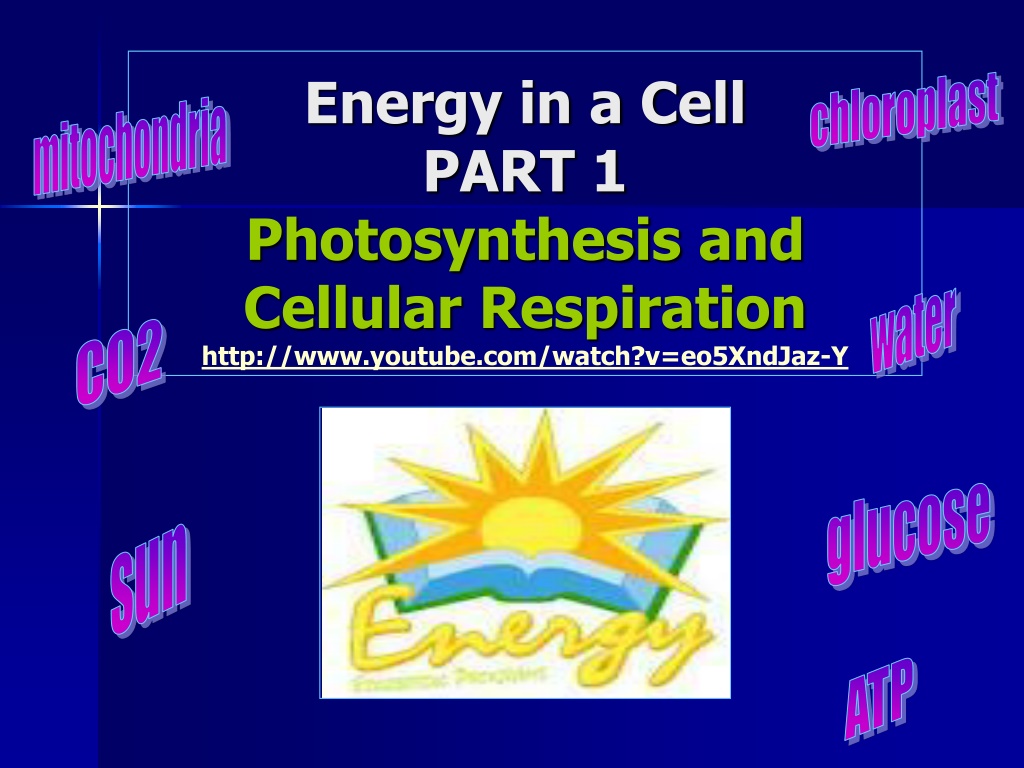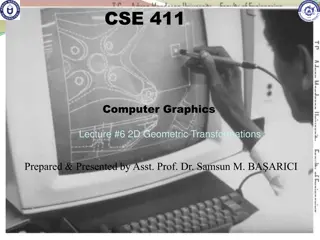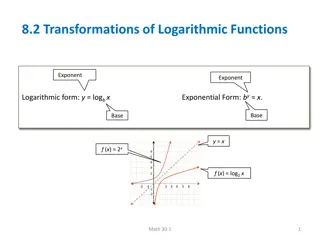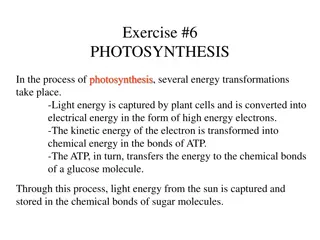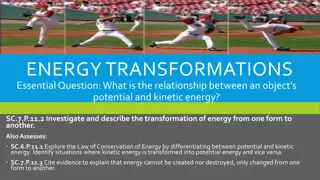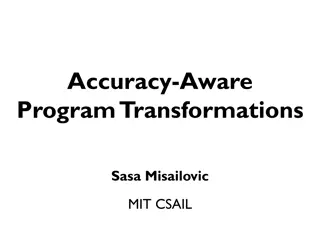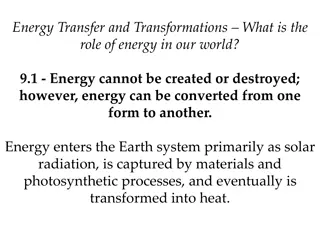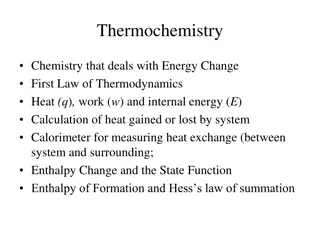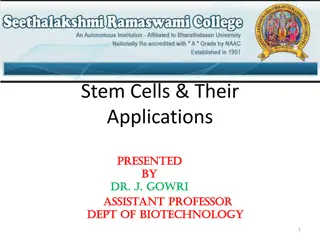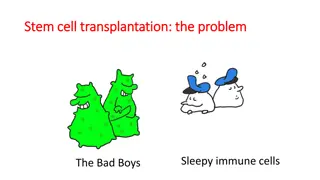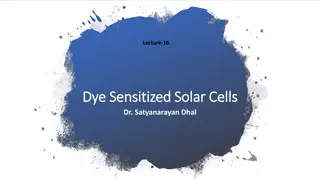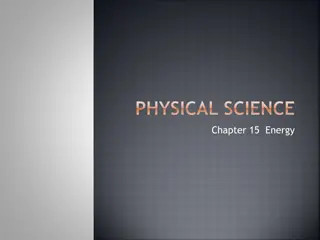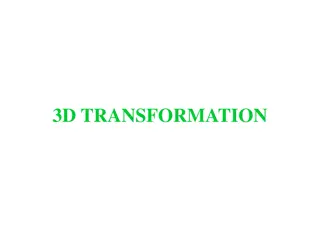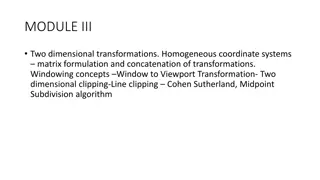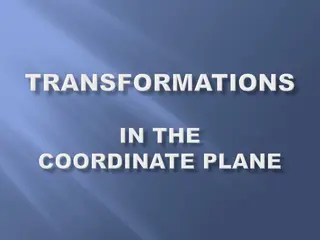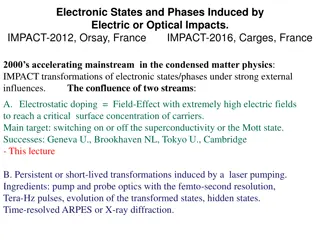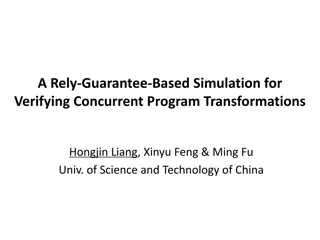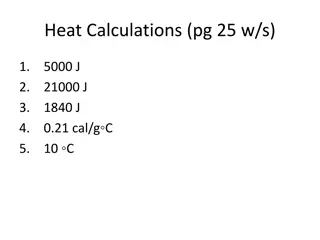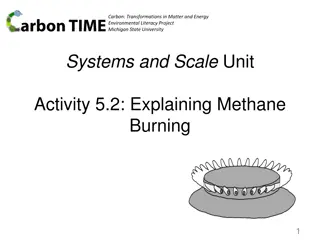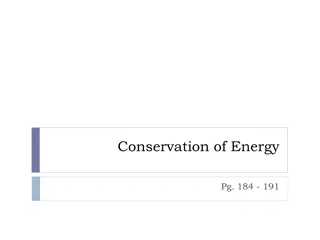Understanding Energy Transformations in Cells
Explore the intricate processes of photosynthesis and cellular respiration, vital for energy production in cells. Discover how radiant energy from the sun is converted into chemical energy like glucose and ATP. Uncover the significance of energy for various metabolic functions in cells, including active transport and protein storage. Gain insights into why humans rely on plants and the essential biomolecules formed in the process. Dive into the world of autotrophs and their ability to harness sunlight for food production through photosynthesis.
Download Presentation

Please find below an Image/Link to download the presentation.
The content on the website is provided AS IS for your information and personal use only. It may not be sold, licensed, or shared on other websites without obtaining consent from the author. Download presentation by click this link. If you encounter any issues during the download, it is possible that the publisher has removed the file from their server.
E N D
Presentation Transcript
Energy in a Cell PART 1 Photosynthesis and Cellular Respiration http://www.youtube.com/watch?v=eo5XndJaz-Y chloroplast mitochondria water CO2 ANd9GcQRttcqvQzqF8ygx7dXzfD4mCrKy-mJPJ27FAqu-rFvFhK799JeLySYLw glucose sun ATP
Predictions Why do humans rely on plants?!!! What biomolecule is formed?!!!
Importance of energy Cells need energy to be able to carry out important metabolic functions to sustain life. Ex: Active transport, cell division, movement of flagella or cilia, transport, and storage of proteins ATP
Energy Transformations All energy originates from the sun Radiant energy is transformed into chemical energy (glucose) during the process of photosynthesis. Chemical energy (glucose) is transformed into another chemical (ATP) during the process of cellular respiration. All organisms perform cellular respiration or fermentation to produce usable energy.
Energy Transformations Photosynthesis Light Energy Cellular Respiration Oxygen Radiant to Chemical Glucose Chemical to Chemical Water Product Carbon Dioxide Reactant
Use the diagram to complete the following sentence stem: Based on the energy transformations diagram, I can infer that _________________________ _________________________ _________________________ _________________________ _________________________
Autotrophs Make their own food by using the energy from the sun Plants, algae, some bacteria are able to produce glucose and store it as starch through the process of photosynthesis
Photosynthesis: the autotrophic process of producing sugars by converting light energy from the sun into chemical energy
Photosynthesis Autotrophs trap electrons from light energy in the chloroplasts of their cells. Use light energy to excite electrons Use excited electrons to form the bonds in a sugar molecule Light Energy 6H2O + 6CO2---------- C6H12O6 + 6O2 Glucose
Photosynthesis chemical equation 6CO2 + 6H2O C6H12O6 + 6O2 reactant product 6 carbon dioxide molecules+ 6 water molecules react to produce glucose + 6 oxygen molecules
Use the equation for photosynthesis to answer the question How is oxygen made during the process of photosynthesis? In other words where does the oxygen come from?
Chlorophyll Photosynthesis also requires the pigment chlorophyll, which absorbs specific wavelengths of light. Chlorophyll is found in the chloroplasts of autotrophic organisms and captures light energy from the sun
STAGES OF PHOTOSYNTHESIS Energy captured from sunlight by being absorbed by chlorophyll Light-dependent reactions light energy converted to chemical energy temporarily stored as ATP and NADPH Calvin cycle chemical energy powers formation of organic compounds using CO2 1) 2) 3)
How autotrophs capture sunlight energy Click image to play video.
Photosynthesis What are the reactants?___________ What are the products?____________
Exit Ticket: Explain the role of CO2 in the formation of organic molecules.
